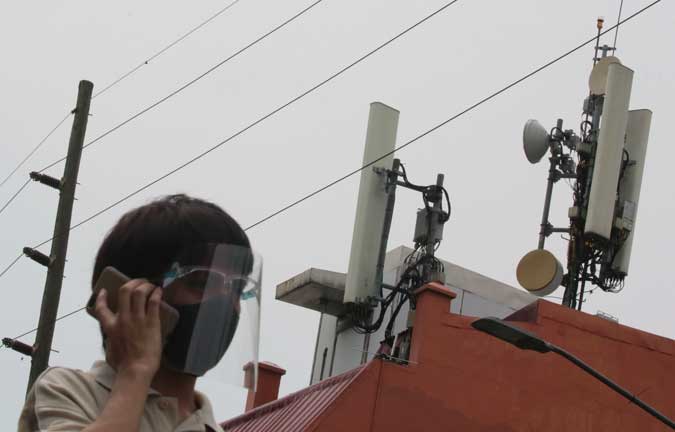
By Arjay L. Balinbin, Senior Reporter
NEARLY a million Filipinos in rural areas do not have access to digital connections, as most cell towers are located in wealthy cities, according to an analysis by Asian Development Bank (ADB) and Thinking Machines Data Science, Inc.
The report was authored by Stephanie Sy, chief executive officer of Thinking Machines; Bruno Carrasco, chief of governance thematic group, ADB; and Hanif Rahemtulla, principal public management specialist, ADB.
Only 9.5% of the 9.4 million Filipinos in poor areas live within 500 meters from a cell tower, ADB and Thinking Machines said in an analysis published on Feb. 1, citing data from the Project Bandwidth and Signal Strength (BASS).
“This leaves almost 850,000 Filipinos beyond the scope of cell site serviceability,” the authors said.
Cities with high wealth levels typically have higher internet speeds as compared with poor cities.
Areas with high wealth and fast speeds are in Luzon, Central Luzon, and Cebu, while areas with low wealth and low speeds are in the peripheries of Northern Luzon, Palawan, Eastern Visayas, and Northern Mindanao.
Digital inequality is apparent when comparing the average download speeds for five richest Philippine cities with the five poorest cities. Residents of the five wealthiest cities in the country enjoy an average fixed broadband download speed of 25.65 megabits per second (Mbps), while those in the five poorest cities experience 4.62 Mbps.
As for the average mobile download speed, those living in the richest cities experience 25.77 Mbps, while users in the poorest cities only get 7.04 Mbps.
The ADB-Thinking Machines analysis noted sufficient internet speed in the Philippines is at least 3.2 Mbps, and only 6% of the population in the poorest cities have access to it as compared with the 100% rate in the wealthy cities.
“For instance, 100% of the population in San Juan, Metro Manila have access to sufficient internet speeds, while only 6.22% and 4.14% of the population in Burgos, Surigao del Norte have sufficient access on fixed and mobile, respectively,” the authors said.
Clusters of cell towers are found in urban areas like Cebu City, Puerto Princesa, and Davao City, “but none of these compare to the breadth and density of towers in Metro Manila with the largest concentration of cell sites.”
There are also large gaps in mountainous areas in the northern Philippines, they said.
Eastern Visayas has the largest last mile population without sufficient internet access to fixed broadband, while Central Visayas has the largest last mile population without access to sufficient mobile speeds.
“Up to 600,000 people on mobile and up to 1.4 million people on fixed broadband either have speeds slower than 3.2 Mbps or did not run a speedtest and are thus not included in the Ookla data,” the analysis said.
Aside from BASS statistics, the ADB and Thinking Machines also used data from Speedtest by Seattle-based Ookla LLC. to analyze spatial patterns of digital inequality.
Their objective is “to better inform and target strategic investments for digital development” using big data and machine learning.
“The insufficiency of digital infrastructures in the country is a result of multiple factors, including stringent restrictions in the telecommunications market leading to a lack of competition and high barriers to entry,” they said.
Malacañang has said the National Government would continue to exert more pressure on telecommunications firms to improve their services.
Presidential Spokesperson Harry L. Roque, Jr. earlier said, citing a report by Ookla, mobile download speeds improved by 202.4% between July 2016 and December 2020, while fixed broadband speeds rose 297.47% during the same period.
Globe Telecom, Inc. Chief Technology Officer Gil B. Genio said at BusinessWorld Insights online forum in October last year that remote areas might see better connectivity in three years with legislation shortening the permit waiting times for cellular towers.
Globe targets to put up 2,000 cell towers this year. It built 1,300 new cell sites last year.
PLDT Inc.’s wireless arm Smart Communications, Inc. built 700 new cell sites last year, and it also plans to roll out 2,000 more this year.
Hastings Holdings, Inc., a unit of PLDT Beneficial Trust Fund subsidiary MediaQuest Holdings, Inc., has a majority stake in BusinessWorld through the Philippine Star Group, which it controls.


